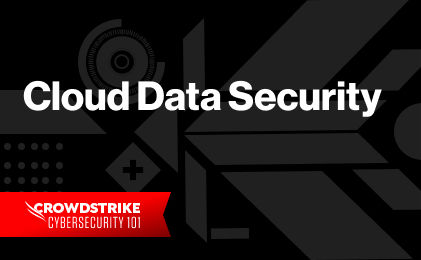What is data protection?
Data protection is a process that involves the policies, procedures and technologies used to secure data from unauthorized access, alteration or destruction. Ultimately, the goal of data protection is to safeguard an organization’s critical data — whether it’s customer personal information, intellectual property or confidential business records. Organizations must implement data protection measures in order to:
- Prevent data breaches
- Minimize the risk of data leaks
- Ensure data availability
- Maintain data integrity
- Comply with relevant regulations
With the proper strategies, organizations can protect their data, safeguard their reputation and forge customer trust. Organizations that protect their data effectively also avoid potential legal and financial consequences.
Importance of data protection
An organization’s data is among its most valuable assets, and safeguarding it should undoubtedly be a high priority. In today’s digital landscape, organizations constantly face the threat of cyberattacks and data breaches. Data protection has become crucial for businesses across virtually every sector.
A 2023 IBM report found the average cost of a data breach is $4.45 million globally. In the United States, the average is $9.44 million in 2022, more than double the global average. The report also determined it took an average of 277 days (about 9 months) to identify and contain a data breach.
Data protection vs. data privacy
Note that data protection is different from data privacy. Data protection focuses on safeguarding data, whereas data privacy deals with how organizations collect, store and use personal information while respecting the rights and consent of their customers and users.
Data protection ensures organizations have the necessary security measures in place to protect sensitive information and comply with privacy regulations. In this way, data protection lays the foundation for achieving data privacy.
Learn More
Data protection safeguards information through policies, procedures and technologies, whereas data security refers specifically to measures taken to stop malware or third parties from manipulating data.
Data security measures are part of the entire data protection process. They ensure integrity of the data within the organization in a way that is consistent with the organization’s risk strategy.
Legal and regulatory frameworks
Compliance regulations are legal requirements — some specific to a geographic region, some specific to an industry — that businesses must adhere to in order to ensure the security and privacy of sensitive data.
In addition to facing an increased risk of data breaches and incidents, non-compliant organizations also face potential legal and financial repercussions. Examples of data protection and data privacy regulations include:
- General Data Protection Regulation (GDPR): A comprehensive data protection regulation applicable in the European Union. GDPR focuses on the privacy rights of individuals and seeks to provide them with greater control over their personal data.
- California Consumer Privacy Act (CCPA): A state-level data protection law in the U.S. The CCPA grants California residents specific rights related to the collection, use and sale of their personal information.
- Health Insurance Portability and Accountability Act (HIPAA): A U.S. federal law that sets privacy and security standards for protecting patient information.
- Payment Card Industry Data Security Standard (PCI DSS): A set of security standards designed to ensure that companies accepting, processing, storing or transmitting credit card information maintain a secure environment.
While compliance with regulations is crucial, organizations must be vigilant about data protection simply for the purposes of safeguarding valuable assets such as intellectual property and sensitive data. Implementing data protection practices goes beyond compliance to ensure these critical assets remain secure and uncompromised.
Learn More
Read this article to learn about a plethora of security frameworks meant to ensure organizations stay compliant with local and international regulations and sensitive data is very well protected.
Key principles of data protection
Different data protection regulations may outline specific principles, but many of these principles share common themes across regulatory frameworks. One set of principles organizations can follow to ensure they handle sensitive data responsibly and securely is the set outlined by GDPR:
| Principle | Description |
|---|---|
| Lawfulness, fairness and transparency | Personal data must be processed lawfully, fairly and in a transparent manner in relation to the data subject. |
| Purpose limitation | Personal data should be collected for specified, explicit and legitimate purposes and not further processed in a manner incompatible with those purposes. |
| Data minimization | Personal data collected should be relevant and limited to, as well as adequate for, the purposes for which it’s processed. |
| Accuracy | Personal data must be accurate and, where necessary, kept up-to-date, with reasonable steps taken to correct or erase inaccurate data. |
| Storage limitation | Personal data should be stored in a form that allows identification of data subjects for no longer than necessary for the purposes it was collected. |
| Integrity and confidentiality | Personal data must be processed in a manner that ensures appropriate security, including protection against unauthorized or unlawful processing, accidental loss, destruction or damage. |
| Accountability | Data controllers must demonstrate compliance with the above data protection principles and take responsibility for the processing activities they perform. |
Data protection trends
Some of the latest trends relating to data protection adopted by enterprises include:
- Ransomware protection: Ransomware essentially encrypts data and demands a ransom payment to retrieve it. Solutions for ransomware protection implement data encryption when they perform data backups to prevent data from being exposed.
- Disaster recovery as a service (DRaaS): Organizations implement this type of solution to create remote copies of entire data centers and use them to restore operations in case of an attack.
- Copy data management (CDM): CDM reduces the number of copies of data stored, which in turn reduces storage and overhead costs. Additionally, it accelerates the software development life cycle and increases productivity.
- Mobile data protection: These solutions focus on protecting data stores on portable devices such as laptops, cellphones and tablets. They do this by ensuring unauthorized users do not access the network, especially when companies adopt BYOD policies.
Learn More
Stay up to date with the most common types of cyberattacks to know how to best stay protected from them.
Data protection techniques and best practices
The following data protection techniques can help guide your organization in protecting its sensitive data:
- Data classification: The categorization of data based on its sensitivity and importance. Common classifications include public, private, internal use only, confidential and restricted. Classifications such as these help you prioritize security measures and allocate resources appropriately.
- Data encryption: The conversion of readable data into an encoded format to protect against unauthorized access. By employing cryptographic algorithms, data encryption protects data from being accessed or deciphered without the corresponding decoding key.
- Tokenization: A form of data obfuscation that replaces sensitive data with unique tokens. This is sometimes referred to as data anonymization and pseudonymization. By removing or replacing identifiable information with opaque identifiers, your organization can make it difficult for attackers to link sensitive data to an individual.
- Secure data storage: Ensures sensitive information — whether it’s stored on-premises or in the cloud — is protected from unauthorized access, data breaches and physical theft. Secure data storage measures include techniques such as encryption of data at rest and physical security measures at data centers.
- Data backup and recovery: Involves regularly creating copies of essential data and ensuring they can be quickly restored in case of data loss, corruption or system failure. This technique is often grouped with data redundancy measures, which involve creating multiple copies of data for storage in different locations.
- Data life cycle management: Includes the processes and policies that guide the creation, storage, usage and disposal of data, ensuring its security and compliance throughout its existence.
- Access control and authentication: Restricts access to sensitive data based on user roles, privileges and credentials.
- Data loss prevention (DLP): Includes strategies and tools that detect and prevent the loss, leakage or misuse of data through breaches, exfiltration transmissions and unauthorized use. DLP tools include patching, application control, and device control, which all help protect data by limiting the surface area available to threat actors. Two specific components are worth highlighting:
- Endpoint security: An essential component of DLP focused on defending endpoints — such as desktops, laptops and mobile devices — from malicious activity. By implementing strong endpoint security measures, organizations can prevent unauthorized access and mitigate the risk of data loss through these devices.
- Insider risk management: Monitors and analyzes the behavior of your organization’s most trusted users to detect and respond to potential data loss, whether stemming from malicious intent or accidental actions. By implementing an effective insider risk management strategy, you can more easily identify unusual activity and better detect data exfiltration attempts.
Expert Tip
Critical data protection best practices to follow:
- Identify sensitive data and assets: Perform an inventory of your organization’s data to determine what constitutes sensitive data. This helps you assess the potential risk and impact that would come with unauthorized access, misuse or loss. This process likely involves collaboration across departments, ensuring a holistic understanding of your organization’s data landscape.
- Implement employee training and awareness: Human error and insider threats are among the most common causes of data breaches, so it’s essential to educate employees about how to handle data safely, spot phishing attempts, and use strong passwords to significantly mitigate these threats. Through regular training programs and simulations, an organization can ensure its employees stay updated on the latest threats used by cybercriminals.
- Assess internal and external risks: IT teams need to be aware of any internal threats, such as insiders with malicious intent to misuse data or security misconfigurations, and external threats such as social engineering attempts.
Data breaches and incident response
When data has not been adequately safeguarded using the techniques and best practices outlined above, an organization might face adverse effects such as a data breach.
Common causes of a data breach include:
- Phishing attacks
- Compromised credentials
- Malware infections
- Insider threats
- Misconfigured security settings
Incident response (IR) planning is therefore an additional vital aspect of data protection. With IR planning, your organization can outline the steps to take to effectively address a data breach or security incident.
A well-prepared IR plan involves a cross-functional team of experts with clearly defined roles and responsibilities. This helps ensure prompt and coordinated actions to contain, investigate and remediate incidents. Crafting an IR plan is only the first step though — it must also be regularly reviewed and updated. With an up-to-date IR plan, you can minimize the impact of data breaches, protecting your valuable data and preserving both your reputation and your customers’ trust.
Expert Tip
When implementing the necessary measures to protect your data, you can pair DLP solutions with next-generation antivirus (NGAV) and endpoint detection and response (EDR), security products built on the integrated, cloud-native CrowdStrike Falcon® platform. CrowdStrike also provides incident response (IR), a comprehensive array of resources and services to help you identify and respond to incidents and breaches.
Protect your data with CrowdStrike
Organizations like yours need to prioritize data protection. By ensuring the security of your sensitive information, you can maintain compliance and safeguard your most valuable assets. The CrowdStrike Falcon® platform is designed to stop breaches, maintain the integrity and confidentiality of personal data, and provide enterprise-wide insight into security events throughout your environment.
Learn More
Learn more about how CrowdStrike empowers organizations with the world’s leading AI-powered platform for unified data protection.








